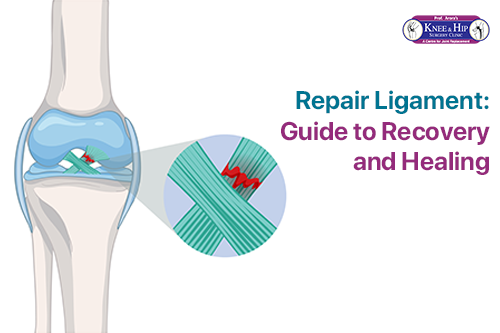
Introduction
Ligament injuries can be crippling, significantly impacting mobility and overall quality of life.Whether you are an athlete, a fitness enthusiast, or someone who experienced a sudden twist or fall, understanding how to repair ligaments is crucial for a full recovery. In this blog, we will dive into what ligament injuries are, their symptoms, treatment options, and tips for effective recovery.
What Are Ligaments?
Ligaments are tough, fibrous tissues that link bones to one another, offering stability and support to joints. They play a vital role in supporting and guiding joint movements. However, ligaments are susceptible to injuries, especially in high-impact activities or sudden accidents. Commonly injured ligaments include the anterior cruciate ligament (ACL), medial collateral ligament (MCL), and the lateral collateral ligament (LCL) in the knee.
Causes of Ligament Injuries
Ligament injuries can occur due to:
1. Sports Activities: High-impact sports like football, basketball, or skiing can strain ligaments.
2. Sudden Movements: A sudden twist, awkward landing, or fall can cause ligament damage.
3. Overuse: Repeated stress on a joint can weaken ligaments over time.
Symptoms of Ligament Damage
Recognizing the signs of a ligament injury is essential for timely repair. Common symptoms include:
- Swelling around the affected joint.
- Pain and tenderness.
- Difficulty in moving the joint or bearing weight.
- A popping sound during the injury, especially in ACL tears.
How to Repair Ligaments
When it comes to repairing ligament injuries, treatment options depend on the severity of the damage. Here’s a detailed look:
1. Rest and Immobilization
For minor ligament sprains, rest is the first step. Avoid putting weight on the injured joint, and use braces or splints to immobilize it. This enables the ligament to recover on its own.
2. Physical Therapy
Physical therapy is crucial for ligament repair, especially in moderate injuries. Therapists guide patients through exercises that improve strength, flexibility, and stability. This not only promotes healing but also helps prevent future injuries.
3. Medications
Nonsteroidal anti-inflammatory drugs (NSAIDs) like ibuprofen help reduce pain and swelling, providing relief during the recovery phase.
4. Surgical Intervention
In the case of severe ligament tears, surgical repair might be needed. Surgeons often reconstruct the damaged ligament using grafts from other parts of the body or synthetic materials. The goal of surgery is to restore joint stability and function.
5. Post-Surgery Rehabilitation
After surgery, a structured rehabilitation program is essential. It includes a combination of physical therapy, controlled movements, and gradual weight-bearing to ensure proper healing.
Natural Ways to Support Ligament Healing
While medical treatment is vital, incorporating natural methods can expedite the process to repair ligaments:
Nutrition: Foods rich in collagen, vitamin C, and zinc can promote ligament repair. Examples include bone broth, citrus fruits, and leafy greens.
Hydration: Proper hydration aids in tissue repair and flexibility.
Low-Impact Exercises: Once approved by your doctor, low-impact activities like swimming or cycling can improve blood flow and strengthen the joint.
Preventing Ligament Injuries
Prevention is always better than cure. Here are some tips to avoid ligament damage:
1. Warm-Up and Stretch: Always warm up before physical activities to prepare your muscles and ligaments.
2. Strength Training: Building muscle strength around joints provides additional support.
3. Proper Technique: Use correct posture and techniques during exercises or sports to minimize strain on ligaments.
4. Wear Supportive Gear: Use braces or supportive footwear when engaging in high-risk activities.
When to Seek Medical Attention
Not all ligament injuries require surgery, but delaying treatment can lead to complications. Seek medical advice if you:
- Experience persistent pain or swelling.
- Have difficulty moving the joint.
- Experience instability in the affected area
Conclusion
Repairing ligaments is a journey that requires patience, effort, and the right approach. Whether you’re treating a minor sprain or recovering from surgery, following a well-structured plan can lead to a successful recovery. Remember, proper care and prevention can help you avoid ligament injuries and maintain a healthy, active lifestyle.
By understanding the causes, symptoms, and treatment options, you can take charge of your recovery and regain full mobility. If you suspect a ligament injury, don’t delay seeking professional help to ensure the best possible outcome.




